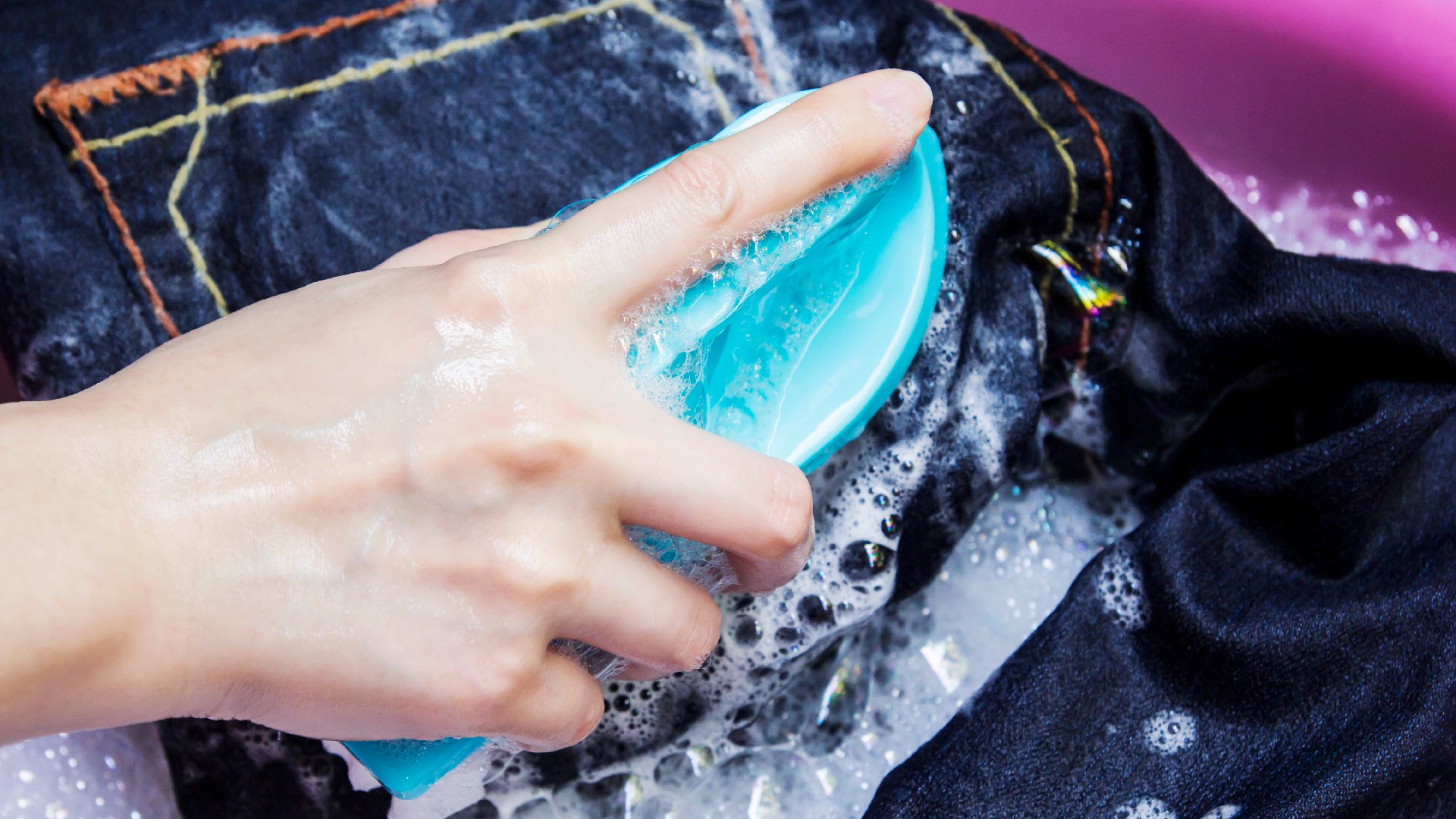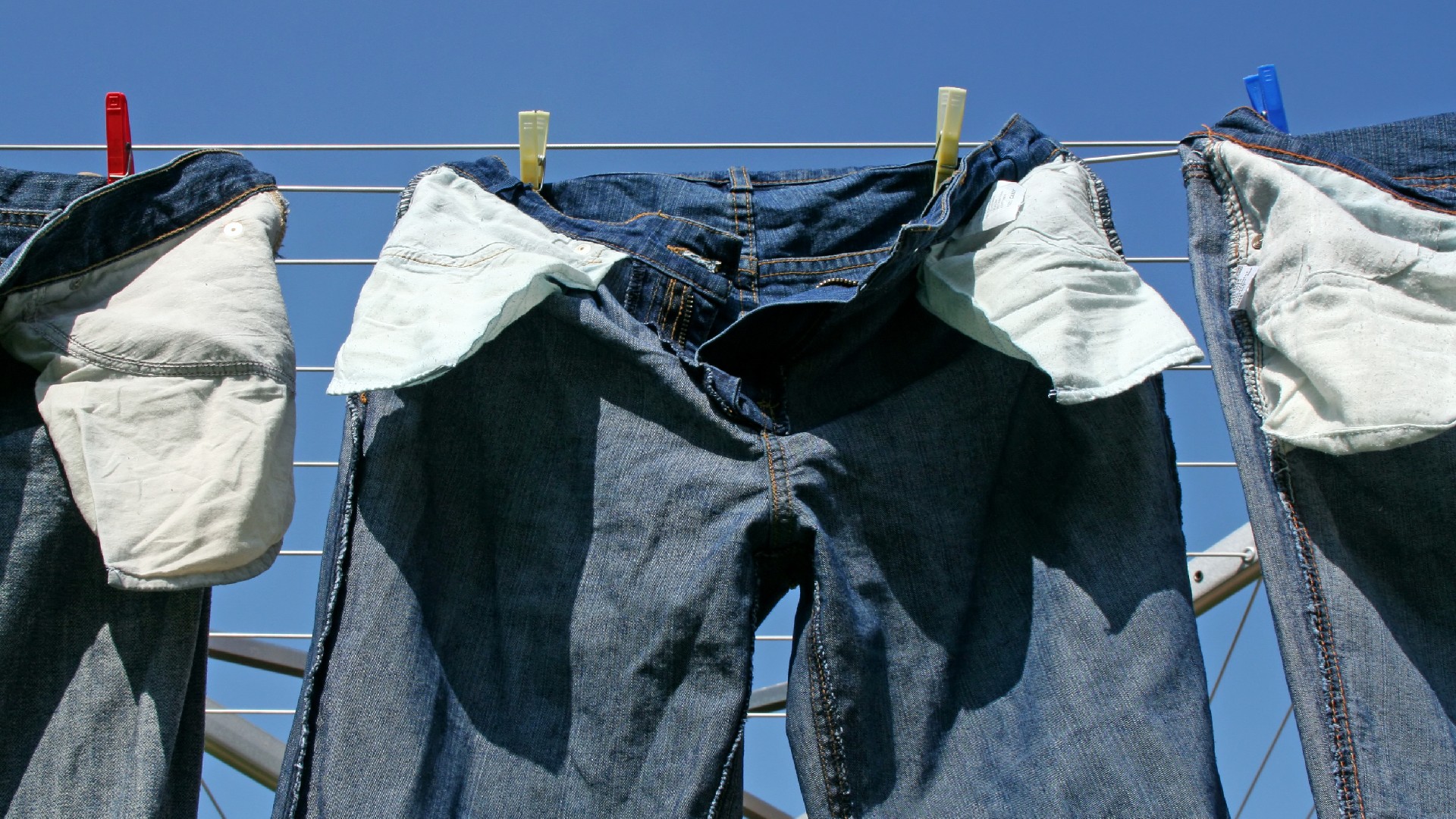How often should you wash jeans? 11 expert hacks for cleaning denim
Keep washes minimal, but when the time comes to wash your jeans, we’ve gathered 11 hacks from laundry experts for cleaning denim.

Rarely a week goes by when we haven’t slipped on our trusty pair of jeans, but how often should you wash them?
While opinions can be divided on the exact time frame, it’s most certainly less than you think. It’s easy to know when your gym kit needs a wash or that summer dress is ready for a soak, but durable denim is a little tougher to identify when it needs a little TLC.
Jumping in muddy puddles aside, the experts at US denim brand Levi’s recommend washing them every 10 wears, or even longer if you can string it out, to maintain the fit and keep the colour.
Levi’s CEO Chip Bergh even revealed he never washes his jeans, and certainly never puts his jeans in the dryer - and he’s been wearing them for over ten years! Instead, the denim aficionado “spot cleans” stains or hand washes if he really feels the need.
How often should you wash jeans?
“If there’s no visible dirt or strong odours, there’s no need to wash your jeans too often" according to laundry expert Lulu O'Connor, "For dry stains like food, you can simply brush the jeans down with a clothes brush rather than doing a full wet wash. Obviously this differs from person to person, but a general idea of how often you should wash jeans would be to wash every 7-8 wears.”
The reason for avoiding washing too much lies with the fabric. Washing breaks down the fibres of the denim which can affect the shape and fade the colour.
Plus, washing less reduces the amount of energy and water you use, which in turn lowers the amount of microfibres that end up in the ocean. Win-win.
Parenting advice, hot topics, best buys and family finance tips delivered straight to your inbox.
It’s also worth noting what type of denim you have as the CEO and Founder of Oxwash, Dr Kyle Grant, reveals this makes an impact on the frequency of your washes.
“Raw denim is a fabric that is unwashed and untreated and it benefits from being worn in, ideally for quite long (around six months). This will allow for the dye to settle and for the fabric to shape around your body. After that, still try to wash as little as possible - each wash will drain a little bit of the dye, every three months should be enough”, he explains.
“Washed or treated denim will be less sensitive and can be washed more regularly but one month is probably a good rule of thumb. Of course, it also depends on activities and how often you wear your jeans - if you wear them cycling every day, wash them more often.”
If you have decided your skinnies stink, your straight-legs are loose or your flares are smelling funky, then it could be time to clean them up.
With help from laundry and jeans experts, we’ve gathered 11 hacks for cleaning denim.
11 hacks for cleaning denim
1. Wash cold
If the time has come for your best jeans to be put in the washing machine, proceed with care and wash them on a cold cycle.
Donna Ida, aka the jean queen and creator of her namesake denim fashion brand, says heat wears jeans down quicker. “Wash your jeans on a cold wash if you can. A hotter wash will damage the fibres”, she says. “Always be gentle with your jeans and use the delicate setting on your machine.”
While heat is not good for your denim, a little tightening of the fabric is normal.
If the denim comes out seriously shrunk, then it’s likely your wash is too aggressive.
“Often washing jeans can make jeans a little tighter, but usually when you wear them they’ll loosen again. If you’re washing your jeans in the right way, they shouldn't come out of the washer too different to when you put them in”, says Lulu O’Connor, founder of the eco-friendly laundry company, Clothes Doctor.
“We always recommend washing most things at a 30 degree cycle. This is because a lower washing temperature is better for both your clothes, and your electricity bill! Higher temperatures will, in the long run, damage or wear away your garments more quickly.”

2. Turn them inside out
Believe it or not, each pair of jeans is unique, with the dye naturally wearing off in places according to how you wear them.
For example, if you’re always using pockets, they may be more worn around this area. It is this that makes them often look even better with age.
Levi’s CEO Bergh explains that if you wash them too early, the indigo will wash off too uniformly making the pair flat.
When you do come to wash your favourite pair, ensure you turn them inside out.
“That way, the fabric that’s facing the full force of the wash is the inside, thus protecting the colour of the outside of your jeans”, says laundry expert Lulu O’Connor. “Again, higher washing temperatures will cause colour fading more quickly, so stick to the low temperature washes, and as always, wash similar coloured garments together to stop any colour leaking onto anything else.”
Rachel Ferreira, spokesperson at Colour Catcher, says you can save time and energy on washes, too.
“Make your life easy. Instead of worrying about the dye of your new pair of jeans bleeding on to your other clothes in the wash, use Colour Catcher when washing the garment”, she says. “The laundry sheet can help prevent colour run accidents and protect the brightness of clothes. It traps loose dyes, so you can wash your entire load together.”
3. Use liquid detergent sparingly
It’s easy to assume that loading up on liquid detergent will make your jeans squeaky clean, but the opposite is actually true.
Take the advice of the Clothes Doctor, use sparingly and stick to liquids over powder or pods.
“Don’t go overboard on the detergent”, says Lulu O’Connor. “Contrary to common thought, adding more detergent to your wash won’t improve the cleanliness of your clothes. In fact, adding too much detergent may mean the washing machine can’t wash it all away, and you’ll be left with residue on your clothes, which is especially true of powder detergents. Stick to the recommended amount.”
4. Never tumble dry
Not to be dramatic, but the experts at Levi’s actually call dryers the “natural enemy of jeans.”
Exposure to heat damages the fibres men that dryers can shrink your jeans.
Instead, it’s best to hang them out on a washing line to air dry as it helps to preserve the fit.
“We recommend air drying, as this will be the most gentle on your denim” says Lulu O’Connor. “Drying inside out helps protect against colour fading, and dry them as you intend to wear them. They’ll keep their shape much better. For example, hang jeans on a hanger or line to dry straight.”
Getting some fresh air to the jeans will certainly help to ward off unsavoury smells as well, but keep them in the shade.
While it’s tempting to hang them in warm sunshine to speed up the drying process, sunlight will fade the colour. Bad news for dark denium and black jeans.
5. Hang in the shower
There are times when your reliable jeans don’t need a full wash, but could do with a little freshen up. Stuck with ideas? Hang them in the shower.
The steam from a hot shower will get any creases out and help to kill bacteria and, according to The Clothes Doctor, is an easy alternative if you don’t own a handheld steamer.

6. Use a toothbrush and soap for small stains
Don’t panic if you do drop something on your jeans. The days of automatically adding them to the washing pile are over if you want to preserve their condition for as long as possible. Instead, consider ‘spot cleaning’. The experts at Levi’s recommend using a toothbrush.
“Use a damp cloth or old toothbrush with mild soap to remove small stains instead of washing them”, say the experts at the fashion brand.
However, you must not be heavy handed.
Any added soap can fade the colour in that area, so if you can get away with just warm water, that would be the preference.
“Be careful with spot cleaning raw denim if the colour has not set properly, don’t rub or scrub too much”, explains Dr Kyle Grant,. “If it’s a greasy stain, a bit of washing up liquid and a soft sponge can do the trick.”
And try to attend to the stain as quickly as possible so that there is less time for the residue to seep into the denim fibres.
7. Try a denim refresh product
If it’s a little spritz your denim needs, think about some of the deodorizing products on offer.
While they won’t rid your jeans of tomato ketchup stains, they will give them that newly-washed feel.
Day2 Dry Wash Spray is one of the best on the market, especially the version recommended for denim.
The creators found that just 40 per cent of the clothes we wash are actually dirty, so the products are designed to cut down on washes, smooth the fabric and eliminate odours.
Gemma Cleland, UK Vice President of Homecare at Unilever explains, "We wanted to revolutionise laundry with a really simple concept; dry shampoo for your clothes.”
Donna Ida swears by The Laundress’ fabric fresh for an in-between wears refresh of her jeans.
While the Clothes Doctor Steamer Water is ideal for killing up to 96% of bacteria while giving your denim a hit of a fresh, floral fragrance.
8. Try adding salt and vinegar
There’s no need to panic, using salt and vinegar won’t leave you smelling like your local chippy.
The indigo on jeans has a tendency to bleed, especially with the first wash.
Instead, try using this household combo to help lock in the dye before it makes its way to the washing machine.
Simply add your jeans to a bucket of four and a half litres of clean water and add 75grams of salt and 240ml white vinegar. The ingredients will work together to lock in the dye and prevent it from rubbing off onto other garments. Leave for 24 hours and rinse in cold, clean water.
“Vinegar in the wash (instead of softener) is a good thing for colour preserving, and can help for smells, too”, says Dr Kyle Grant.
9. Consider the freezer
There have long been rumours that storing your jeans in a sealed bag in the freezer can help clean them. While there is some truth in this, our advice is to proceed with caution. The science behind it is that cold temperatures help to freeze the molecules that we recognise as body odour.
“You can put them in the freezer if you've got any dirt on them”, says Donna Ida. “Once frozen, you will be able to scrape any dirt off, too.”
However, while freezing them offers a quick fix to bad smelling denim, once the fabric defrosts properly, the smell may still be lingering.
“Realistically, freezing jeans is not a viable alternative to washing them”, says O’Connor. “Whilst freezing may put some of the weaker bacteria ‘to sleep’ as such, they’ll only ‘wake up’ again when you remove them from the freezer.”
10. Steam iron
While denim might seem like a tough, durable material, it needs to be looked after with care.
“You can iron jeans, but at Clothes Doctor we recommend steaming as a gentler alternative” says O’Connor.
“The direct high heat of irons can be harmful to garments, so steaming or using a trouser press are gentler options.”
If you do decide to iron, then turn the jeans inside out first.
“Sometimes ironing can make some jeans a bit shiny over a longer period so a firm hold on the inside out can smooth them well,” advises Donna Ida.

11. Customise
Think your jeans are on their last legs? Think again!
The great thing about denim is that they can easily be customised to hide stains or blots.
Got a small tear? Ripped jeans are a great style that never goes out of fashion.
Think about ironing patches over awkward stains that feel impossible to remove like marker pens or red wine.
Or you could even cut the jeans into short to make them the ideal summer option.
There are hordes of alteration services available as well if you’re not a dab-hand with a needle.
“Making sure your wardrobe works for you is the key to getting the most out of it” says Emily Rea, co-founder of repair service The Restory.
“Go through your old clothes, work out why you no longer wear them, and find the solution - this could be as simple as changing the buttons or adjusting the length.”